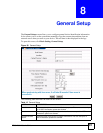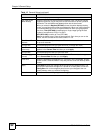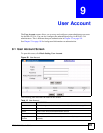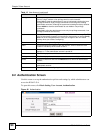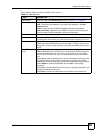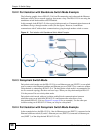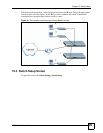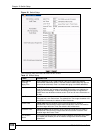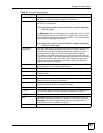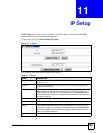
Chapter 10 Switch Setup
IES-612-51A User’s Guide
98
10.2.2 Port Isolation with Standalone Switch Mode Example
The following graphic shows IES-612-51A 1 and 2 connected to each other and the Ethernet
backbone switch (3) in a network topology that creates a loop. The IES-612-51A are using the
standalone switch mode and have RSTP enabled.
In this example, both IES-612-51A have port isolation turned on. Communications between A
and B must first go through another switch (3 in the figure). However, A and B can
communicate with C without their communications going through another switch or router.
Figure 41 Port Isolation with Standalone Switch Mode Example
10.2.3 Daisychain Switch Mode
Daisychain switch mode sets the IES-612-51A to use Ethernet port one (ENET 1) as an uplink
port to connect to the Ethernet backbone and Ethernet port two (ENET 2) to connect to another
(daisychained or subtending) IES-612-51A. The daisychain switch mode is recommended for
use in a network topology that does not have loops. When you daisychain multiple IES-612-
51A they must all be set to daisychain mode.
Daisychain switch mode with port isolation enabled blocks communications between
subscriber ports on an individual IES-612-51A and between the subscribers of any
daisychained IES-612-51A (see Figure 42 on page 99 for an example). Use the same port
isolation setting on all IES-612-51A that you set up in a daisychain.
10.2.4 Port Isolation with Daisychain Switch Mode Example
In the example below, the IES-612-51A 1 has its Ethernet port one (ENET 1) connected to the
Ethernet backbone switch (3) and it’s Ethernet port two (ENET2) connected to Ethernet port
one (ENET 1) of the daisychained IES-612-51A (2).




